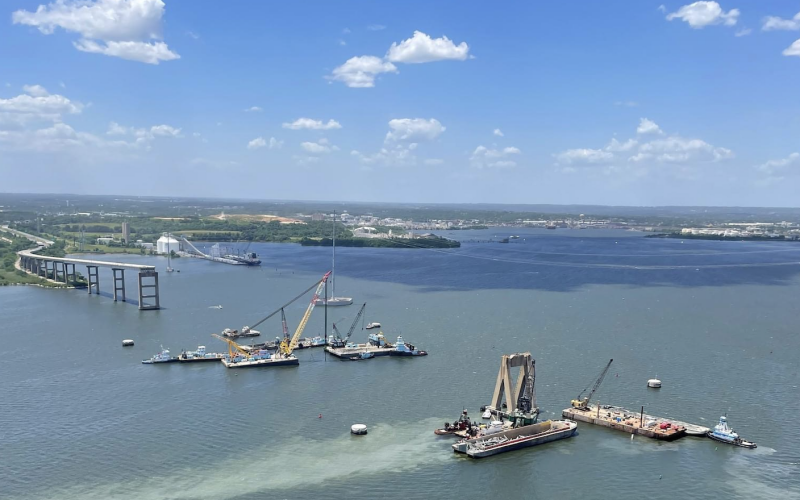More than $100 million has been spent so far to clear wreckage from the collapsed Francis Scott Key Bridge and reopen Baltimore’s main shipping channel, according to an assessment from federal officials.
About $75 million of that went toward removing 50,000 tons of steel and concrete from where it fell March 26, when the 985’ container ship Dali suffered a power outage and plowed into a bridge support pier.
Six construction workers on the bridge deck died in the collapse. A massive federal and state response included $24 million in Coast Guard operations, and the joint response command that oversaw salvage operations that reopened the channel in under 100 days.
The National Transportation Safety Board determined the Dali had experienced power problems before its early morning departure from Baltimore and the bridge allision around 1:30 a.m. But the agency has yet to reach clear conclusions about the accident, and an FBI investigation is likewise continuing.
The Dali was removed May 20 from where it was lodged on the bridge pier, and the Coast Guard and U.S. Army Corps of Engineers declared the Fort McHenry Channel fully restored June 10 to its 700’ navigable width.
The federal response included a $60 million emergency aid package, and a scramble to re-route cargo pathways through other East Coast ports. At a June 12 press conference U.S. Transportation Secretary Peter Buttigieg said the experience of supply chain disruptions during the Covid pandemic somewhat prepared his agency for a major port shutdown.
“We were able to mount that response largely to the work of the White House Supply Chains Disruptions Task Force and the lessons that we learned in recent years – especially from Covid – that put us in a strong place to mitigate the disruptions to our supply chain and economy,” said Buttigieg.
“Through our secure data sharing platform known as FLOW, that was created to deal with Covid, we're able to share data with public and private partners as far away as the Port of Savannah, the Port of New York and New Jersey, giving us a better view of our complex supply chains.”



.jpg.small.400x400.jpg)

